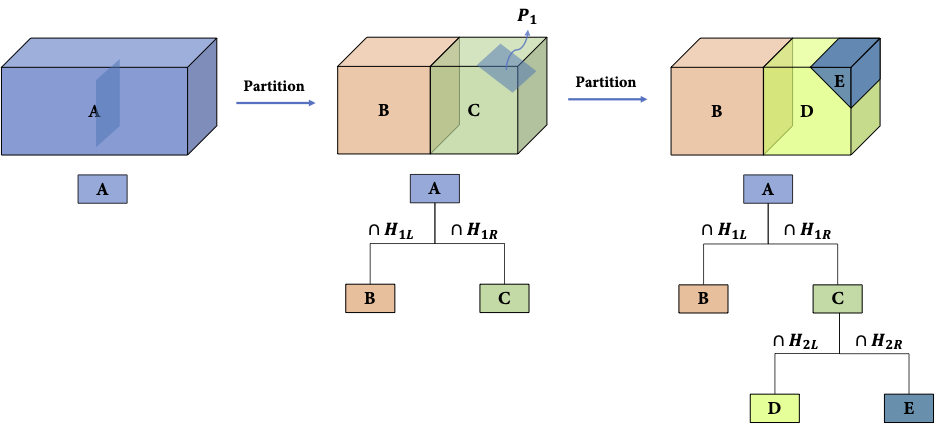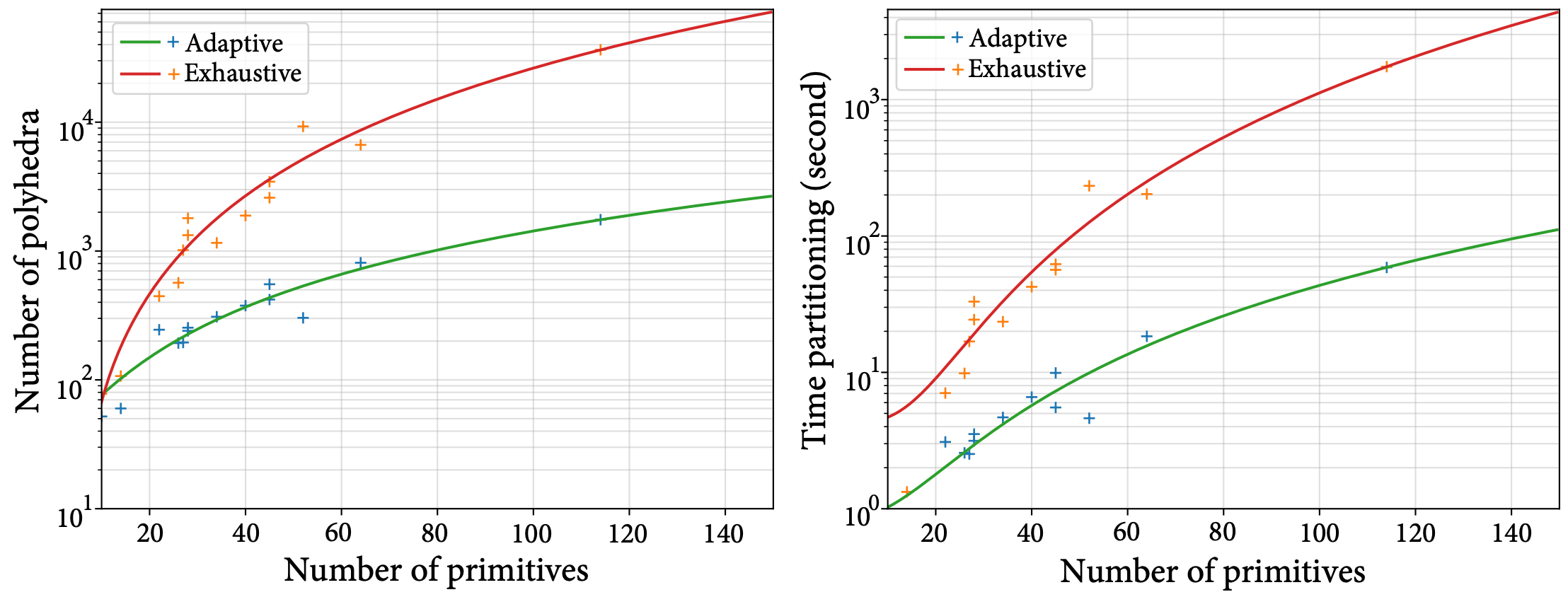A Python tool for 3D adaptive binary space partitioning and beyond
Project description

Introduction
abspy is a Python tool for 3D adaptive binary space partitioning and beyond: an ambient 3D space is recessively partitioned into non-overlapping convexes with pre-detected planar primitives, where the adjacency graph is dynamically obtained. It is implemented initially for surface reconstruction, but can be extrapolated to other applications nevertheless.
An exact kernel of SageMath is used for robust Boolean spatial operations. This rational-based representation help avoid degenerate cases that may otherwise result in inconsistencies in the geometry.
Installation
Install requirements
All dependencies except for SageMath can be easily installed with PyPI:
pip install -r requirements.txt
Optionally, install trimesh and pyglet for benchmarking and visualisation, respectively:
pip install trimesh pyglet
Install SageMath
For Linux and macOS users, the easist is to install from conda-forge:
conda config --add channels conda-forge
conda install sage
Alternatively, you can use mamba for faster parsing and package installation:
conda config --add channels conda-forge
conda install mamba
mamba install sage
For Windows users, you may have to build SageMath from source or install all other dependencies into a pre-built SageMath environment.
Install abspy
abspy can be found and installed via PyPI:
pip install abspy
Quick start
Here is an example of loading a point cloud in VertexGroup (.vg), partitioning the ambient space into candidate convexes, creating the adjacency graph and extracting the outer surface of the object. For the data structure of a .vg file, please refer to VertexGroup.
import numpy as np
from abspy import VertexGroup, AdjacencyGraph, CellComplex
# load a point cloud in VertexGroup
vertex_group = VertexGroup(filepath='points.vg')
# normalise the point cloud
vertex_group.normalise_to_centroid_and_scale()
# retrieve planes, bounds and points from VertexGroup
planes, bounds, points = np.array(vertex_group.planes), np.array(vertex_group.bounds), np.array(vertex_group.points_grouped, dtype=object)
# additional planes to append (e.g., the bounding planes)
additional_planes = [[0, 0, 1, -bounds[:, 0, 2].min()]]
# initialise CellComplex from planar prititives
cell_complex = CellComplex(planes, bounds, points, build_graph=True, additional_planes=additional_planes)
# refine planar primitives
cell_complex.refine_planes()
# prioritise certain planes
cell_complex.prioritise_planes()
# construct CellComplex
cell_complex.construct()
# print info on the cell complex
cell_complex.print_info()
# visualise the cell complex (only if trimesh installation is found)
cell_complex.visualise()
# build adjacency graph of the cell complex
graph = AdjacencyGraph(cell_complex.graph)
# apply random weights (could instead be the predicted probability
# for each convex being selected as composing the object in practice)
weights_list = np.array([random.random() for _ in range(cell_complex.num_cells)])
weights_list *= cell_complex.volumes(multiplier=10e5)
weights_dict = graph.to_dict(weights_list)
# assign weights to n-links and st-links to the graph
graph.assign_weights_to_n_links(cell_complex.cells, attribute='area_overlap', factor=0.1, cache_interfaces=True)
graph.assign_weights_to_st_links(weights_dict)
# perform graph-cut
_, _ = graph.cut()
# save surface model to an obj file
graph.save_surface_obj('surface.obj', engine='rendering')
Misc
- Why adaptive?
Adaptive space partitioning can significantly reduce computations for cell complex creation, compared to an exhaustive partitioning strategy. The excessive number of cells not only hinders computation but also inclines to defective surfaces on subtle structures where inaccurate labels are more likely to be assigned.
- What weights to assign to the adjacency graph?
There are two kinds of weights to assign to an S-T graph: either to n-links or to st-links. For surface reconstruction using graph-cut, assign the predicted probability of occupancy for each cell to the st-links, while assign overlap area to the n-links. Read this paper for more information on this Markov random field formulation.
License
Citation
If you use abspy in a scientific work, please cite:
@article{chen2021reconstructing,
title={Reconstructing Compact Building Models from Point Clouds Using Deep Implicit Fields},
author={Chen, Zhaiyu and Khademi, Seyran and Ledoux, Hugo and Nan, Liangliang},
journal={arXiv preprint arXiv:2112.13142},
year={2021}
}
Project details
Release history Release notifications | RSS feed
Download files
Download the file for your platform. If you're not sure which to choose, learn more about installing packages.
















